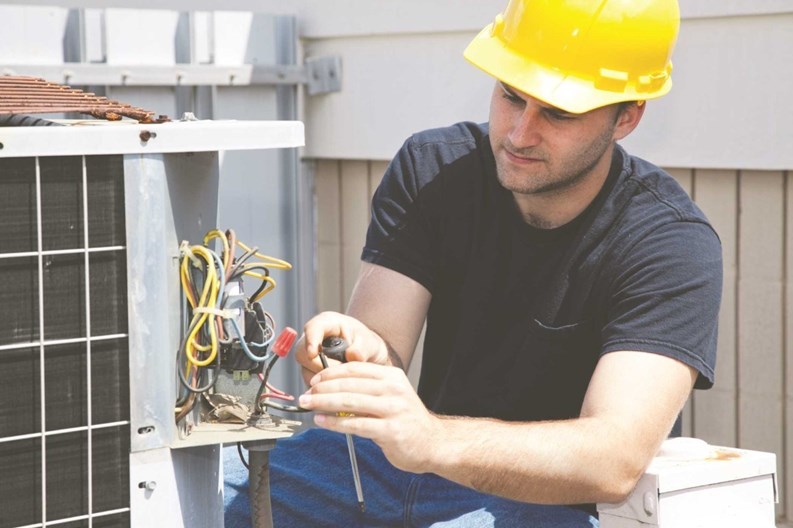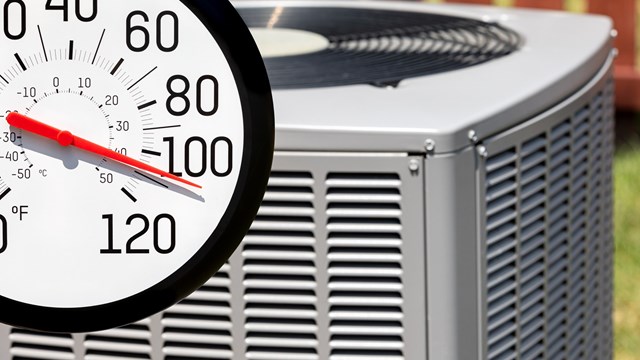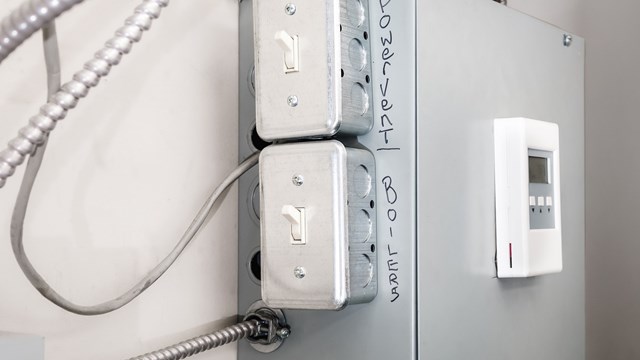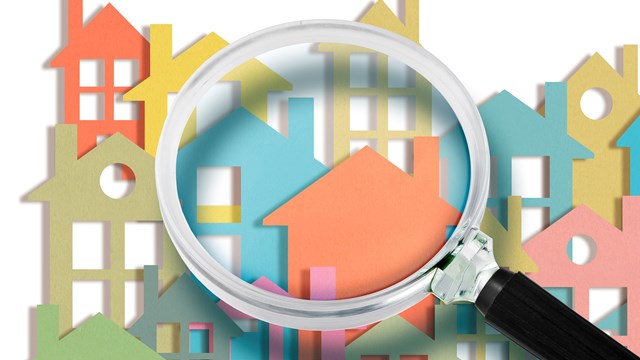With harsh winters and blistering hot summers, those living in New England condominiums understand the importance of properly working heating, ventilation, and air conditioning (HVAC) systems.
That’s why it’s important for managers and residents to know who is responsible for what and how to properly maintain these systems, which could be a single heating/cooling system for the entire building or individual furnace or cooling systems in each unit. After all, in residences such as large high-rise buildings or townhome communities, a variety of HVAC technologies can be found. HVAC is the umbrella term for the system that includes all the equipment used to ventilate, heat and cool the building, move the air through the ductwork, and have that air filtered and clean for the occupants.
“There’s no one-stop answer for how to maintain HVAC systems in New England condos, because HVAC covers everything from a window shaker up to a larger chiller with air hammers—so it really depends on what type of building you are looking at,” says Jeff Federspiel, property manager/facilities manager of Boston-based Barkan Management Company. “Depending on what property you are at and the community you are in, the most important thing is to understand the type of system you have.”
After all, condos can be small garden-style townhouses or large high-rise buildings, so a variety of HVAC technologies can be found. In one small area on the Boston waterfront, five condos within two miles of each other utilize five different HVAC technologies—window air conditioning units, water source heat pump systems, a chiller system with water cooling, a chiller with air cooling and a chiller that runs off steam.
“Education of the board member, management company and the maintenance people is vital,” Federspiel says. “If they understand the system parameters and what it’s supposed to provide, that’s half the battle.”
Proper Care
According to Gary Gallipoli, president of Complete Heating & Air Conditioning Inc. in West Haven, Connecticut, in most older, smaller condos, the association supplies the heating and cooling to the unit, while in newer condos, the owner typically owns the HVAC that heats and cools his or her unit.
However, Federspiel adds that typically, the systems that provide heating and cooling to the common elements are the responsibility of the association.
“Let’s say you’re in a suburban style townhouse setting where they have a clubhouse or common meeting room, that system would be the responsibility of the association,” Federspiel says. “Typically, heating and cooling solely dedicated to the unit becomes the unit owner’s responsibility to take care of it. There may be ancillary systems that feed the component, that are maintained by the association, but the component within the unit is responsibility of person who owns the unit.”
The most popular and cost-effective units for condominiums are water-cooled or chiller boiler systems, which combine the chiller, boiler, pumps and controls into a single package for simple installation and maintenance. A water-cooled system has a cooling tower which cools water that serves all units in a building, rather than each unit having its own.
“One of the biggest advantages to a water-cooled air conditioning system is that the system will never freeze up like a conventional home HVAC system and it’s also very efficient,” Gallipoli says. “Chilled water is circulated through a water coil-equipped air handler to cool the living space, and at the same time heat is absorbed from the air and is pumped outside for removal. A roof mounted chiller or a cooling tower lowers the water temperature around 10 degrees, before the cooled water is pumped back in to the distribution lines.”
Maintenance and inspection of water-cooled systems are critical because the cooling tower is mounted on the roof and holds thousands of gallons of water. If something goes wrong you could have a very big problem. A good rule of thumb is to have it checked every six months to ensure that everything is working perfectly.
“Proper maintenance of the building’s heating-air conditioning system will help to prevent system breakdowns,” Gallipoli says. “Regular maintenance of that system should include changing air filters annually, and also cleaning the cooling system’s coils.”
According to Michael Vinick, president of Duct & Vent Cleaning of America in Springfield, Massachusetts, and a board member of the National Air Duct Cleaners Association (NADCA), every time the furnace or air conditioner is in operation, dust, dirt particles, debris, pollen, pet dander and other pollutants are drawn into the duct system and must be cleaned.
No matter how simple or complex a system, there are daily or weekly things that should be done to preserve the systems.
“Daily maintenance should include a general walk-through for rooftop units or split condenser types to ensure everything is working properly and that there are no indications of any leaks or water staining from a backed-up condensation problem,” Federspiel says. “A large chiller system would require you checking your water chemicals in the cooling tower to make sure you are not doing harm, checking pressures, and checking the automation system that runs your building.”
What If?
With the economic problems facing many buildings and residents in 2012, sometimes routine or mundane maintenance tasks may be skipped, causing harm.
“Especially associations that get a little short on cash, they start to defer on maintenance and it’s going to get to a point when you have to replace it. I’ve seen people skip cleaning the filter or lubricating the bearings, but those methods are there for a reason,” Federspiel says. “The manufacturer has developed that maintenance because of known problems if maintenance isn’t done. Preventative maintenance is much better than corrective maintenance.”
Systems that are not maintained properly, can lead to a great expense for the building or unit owner.
“Something as simple as an air filter in a unit’s A/C unit, if you don’t change or clean it, you can have a clogged evaporator coil which leads to icing up of the unit, and could cause water stains or leaks, causing drywall damage or mold,” Gallipoli says. “On top of that, it reduces your air flow. It is working twice as hard to push air across the coil and you are spending more money.”
On a larger system, if the fan belts on a cooling tower or a larger system aren’t tight, the system could overheat.
“For some larger units, you need to check the oil levels on compressors,” Federspiel says. “If your charge runs low, you can cause a multi-thousand dollar repair. This can be saved if you just do a visual inspection on an annual basis.”
Green Options
With today’s environmentally-friendly way of thinking, a number of HVAC green/energy innovations are finding their ways into New England condominiums, such as energy recovery units, cogeneration units and condensing boilers.
“The energy recovery units save on operating costs by recovering energy from the bathroom exhaust and using this energy to precondition the building’s common area ventilation system,” says Michael Brown, senior vice president in the Boston office of engineering firm WSP Flack+Kurtz. “Condensing boilers are hot water boilers designed to recover energy normally discharged through the chimney as waste heat. How it works is the water vapor produced by the burning of gas in the boiler condenses back into liquid water, releasing the latent heat of vaporization from the water. Because latent heat is a more significant source of energy, condensing boilers have efficiency ratings up to 98 percent.”
Then there are combined heat and power units, called co-gen units, efficient on–site power systems that produce electric power and thermal energy for heat while reducing greenhouse gases.
“Cogeneration or combined heat and power units generate both electricity and hot water through a reciprocating engine generator,” Brown says. “The engine’s waste exhaust heat is captured and used to generate hot water for the buildings residents. By capturing and using the waste heat, these systems consume only 50 percent of the fuel burned by a central utility company power station to provide an equivalent amount of energy.”
Other co-gen technologies include micro-turbines and fuel cells. By making continuous use of both electricity and thermal energy, condominium residents can save up to 35 percent on overall energy costs.
Also slowly coming into play are the addition of photovoltaic panels, a method of generating electric power by converting solar radiation into direct-current electricity using semiconductors that exhibit the photovoltaic effect. The direct current is converted into alternating current and connected to the building’s electrical distribution system.
“These need almost negligible maintenance and have an expected life of over 40 years. However, photovoltaic system providers recommend the PV system be serviced once every five years to ensure the panels remain clean,” Brown says. “The wires and overall electrical system should also be checked in a routine manner just like you would check other appliances.”
For this newer technology, most of the maintenance should be done by qualified professionals and not the condo’s staff.
Final Thoughts
Since the life expectancy of an HVAC system is approximately 20 to 30 years, maintaining it correctly should have it working up to and possibly beyond those years. Without proper maintenance, breakdowns will occur and you may be looking at a full system replacement years earlier than expected.
“It’s always better to be preventative and not corrective,” Federspiel says. “You should stay ahead of breakdowns by doing repairs and cleanings at the proper times.”
Federspiel adds all you really need to do is educate yourself and listen to the equipment.
“The equipment in the building will talk to you,” he says. “It will tell you if something is wrong. If you are familiar with the equipment and educated about what you are looking for, you will be able to walk in the room and just the sounds you hear or visuals you see should tell you if there is something wrong with the equipment.”
Keith Loria is a freelance writer and a frequent contributor to New England Condominium.










Leave a Comment